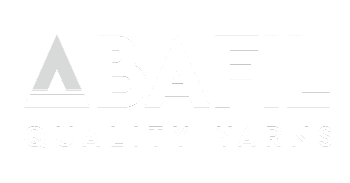Processes
Abafil offers customers a solution-oriented service, providing them with its consolidated experience, highly innovative approach and outstanding technological and manufacturing expertise.
This is the result of over 40 years of passion for high-quality yarns and of a commitment to investment which the company has demonstrated through the purchase of machinery to process yarns.
Doubling and Twisting
Doubling is used to combine multiple yarns (from a minimum of 2 to a maximum of 12) on a single bobbin before twisting the yarns in preparation for the next processing stage: twisting.
This process is carried out using doubling machines. All our doubling machines are electronically controlled latest-generation models that ensure high quality standards.
Twisting is central to our manufacturing.
In the twisting process, the doubled bobbins are loaded on twisters that twist the threads – ranging from 2 to 12 – together to produce a single yarn composed of multiple threads. The resulting yarns can then be used in a wide variety of applications.
Vacuum Thermosetting
A secondary process used to stabilize the yarns after the twisting process.
This process gives the machined fibres certain physical properties that differ from those of the original material, such as increased strength or stretch-resistance.
This operation is carried out in our special vacuum chambers, which are filled with superheated steam, sometimes reaching a pressure higher than atmospheric pressure. One of the main results of vacuum thermosetting is to prevent any yarn shrinkage in the subsequent processing stages.
Spooling
In this process the yarn is transferred from one spool to another.
This operation is carried out both to change the size of the tube around which the yarn is wrapped and to divide yarn on a single bobbin into multiple bobbins.
The same machines can be used to apply paraffin to the yarn or to produce softer spools for dyeing.
Gassing
A finishing process that aims to eliminate, by quickly passing a gas flame over the yarn, hairiness due to particularly long fibres that have formed in the yarn or fabric and which are impossible to remove with mechanical equipment.
Gassed yarns are mainly made of cotton and viscose.
Reeling
A process that involves winding yarn into skeins on reels.
This operation allows the yarn to be evenly dyed or to be mercerised, which makes the cotton fibres expand and adds lustre to the yarn.
Since this process is expensive, it is usually carried out on valuable yarns or yarns for use in special fabrics.
Waxing
A process in which the yarn is dipped in special tanks containing liquid wax and then baked in ovens at a high temperature, enhancing its lustre and stiffness. Yarns treated in this way can be used in various sectors, such as in the production of hanging tags or shoe laces.
Head Office
Via Bergamo 46
Medolago (BG) - Italy
Phone: +39 035 901138
P.IVA 03263820163
E-mail
info@abafil.it
